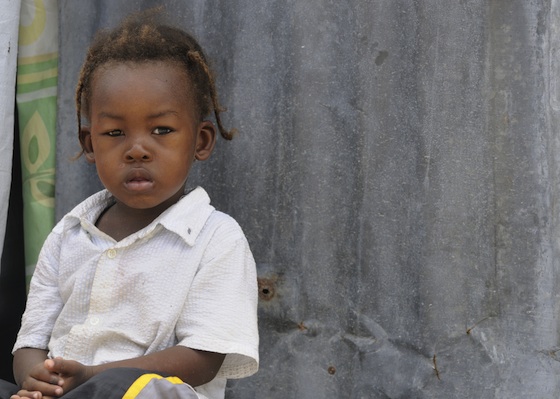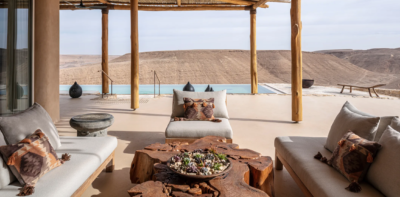 A young child sits in a Haitian tent city – a temporary housing solution for displaced refugees. Thousands of African migrants will soon be moved to similar units in Israel’s Negev Desert to the dismay of local residents.
A young child sits in a Haitian tent city – a temporary housing solution for displaced refugees. Thousands of African migrants will soon be moved to similar units in Israel’s Negev Desert to the dismay of local residents.
Following a spate of violence against African migrants living in southern Tel Aviv, the Defense Ministry has dispatched dozens of bulldozers to Ketziot near the Egyptian/Israeli border to clear land for a detention center. Called Ir Amim, which means City of Nations in Hebrew, the desert asylum center will initially contain enough recycled shipping containers to house 3,000 African migrants.
Eventually the Ketziot center will be expanded to accommodate an additional 8,000 people. The Defense Ministry also announced that it will erect up to 25,000 tents for migrants in five detention centers that will be run by the prison service. The idea is to keep African migrants out of Israeli cities and create a deterrent to any future asylum-seekers. But the Negev Regional Council and local residents are deeply opposed to the plan.
Sanctuary in tents
Although Israel has begrudgingly provided sanctuary to African migrants who face political instability and violence in their home countries, a Jerusalem court recently ruled that Israeli can deport Southern Sudanese nationals despite the ongoing trouble in the newly-formed country. But Sudanese only represent a small minority of African migrants living in Israel.
For the rest, including thousands of Eritrean nationals and other future asylum-seekers, shipping and containers and tents in the Negev will be home. The first phase of the Ketziot center is expected to be completed by the end of this year, although people may start moving in as early as November, and the tent cities will follow soon thereafter.
But locals are not impressed.
“Setting up a tent city simply looks bad. You take people from south Tel Aviv, stick them in tents in the middle of the desert, and now [I’m supposed] to look after them,” said Ramat Negev Regional Council head Shmuel Rifman.
Solarize the centers
No sewage treatment facilities exist yet and energy in the region is already intermittent and scarce. Locals worry that these new compounds will usurp their own resources. Proving sufficient water to the new desert dwellers will also be an issue.
Palestinian politics aside, Israel is a small country, so there isn’t a lot of extra space to house the 2,000 migrants that enter the country each month. Although there is a risk that these centers could become unhealthy, unruly camps, there is also an opportunity to make use of the desert’s resources to mitigate that potential.
Instead of tapping into the national grid for power, the Defense Ministry should install solar panels to provide energy, which might placate local residents. And rather than build chemical waste treatment plants, hundreds of carefully-placed compost toilets would process human waste far more efficiently. It would only be necessary to replace the bins once a month.
Asylum-seekers who show leadership qualities can be tasked with monitoring the panels and toilets to ensure that they function properly, which in turn would help to promote internal rather than enforced order. Even though Israel wants to discourage further “infiltrators,” the public will be more supportive of this initiative if it is run humanely and without diverting a pile of resources financed by their tax contributions.
:: Haaretz
Image credit: Haiti refugee by Arindambanerjee, Shutterstock
More on Tent Cities and Shipping Containers:
How Israel’s Tent Cities Influenced Occupy Wall Street
Tent City Dismantled in Tel Aviv – Now What?
Street Art Meets Castro Fashion in Recycled Shipping Containers




I love seeing how recycled shipping containers are being used to to provide quick temporary facility solutions. There is a high school in NJ http://www.brrsd.net/holh/ which has finished one out as a medical clinic and stocked it with donated supplies and is in the process of sending it to remote Uganda. What a great way to get their students thinking about the rest of the world and helping at the same time.
African nations are habitually in chaos, so the refugees will never be able to return to their homes, but become citizens of Israel, a small nation already overcrowded beyond its resources. But the Israeli people do not wish to be overwhelmed by Africa’s population explosion and they should put a stop to this flood of humanity and encourage the African nations to attend to their own internal problem with family planning education. Otherwise, the chaos in Africa will become chaos in Israel.